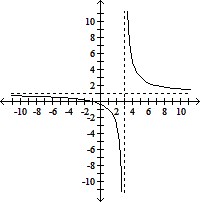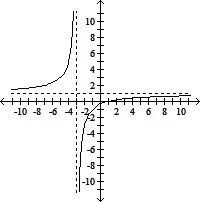For the following rational function, identify the coordinates of all removable discontinuities and sketch the graph. Identify all intercepts and find the equations of all asymptotes.f(x) = 

A. removable discontinuities:  , (-1, 0);
, (-1, 0);
x-intercept: (-1, 0), y-intercept:  ;
;
asymptotes: x = 3, y = 1
B. removable discontinuity at (-1, 0);
x-intercept: (-1, 0), y-intercept:  ;
;
asymptotes: x = -3, y = 1
C. removable discontinuity at  ;
;
x-intercept: (1, 0), y-intercept:  ;
;
asymptotes: x = -3, y = 1
D. removable discontinuities:  ,
,  ;
;
x-intercept: (1, 0), y-intercept:  ;
;
asymptotes: x = 3, y = 1
Answer: D
You might also like to view...
List the like terms of the expression.-11pq + 5pq2 - 4p2q - 7pq
A. -11pq, 5pq2, - 4p2q, - 7pq are like terms B. There are no like terms C. -11pq and - 7pq are like terms D. -11pq and - 7pq are like terms 5pq2 and - 4p2q are like terms
Solve the problem.The following data represents the amount of money Tom is saving each month since he graduated from college.  Find the slope of the line of best fit for the data set and interpret it.
Find the slope of the line of best fit for the data set and interpret it.
What will be an ideal response?
Solve the problem.If $500,000 is to be saved over 30 years, how much should be deposited monthly if the investment earns 4.75% interest compounded monthly?
A. $539.60 B. $402.56 C. $629.07 D. $465.12
Simplify the statement whenever possible. Then label the statement as true or false.-92 ? -100
? -100
A. True B. False